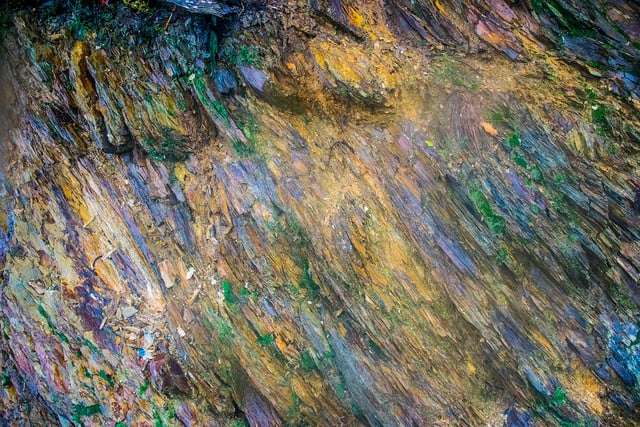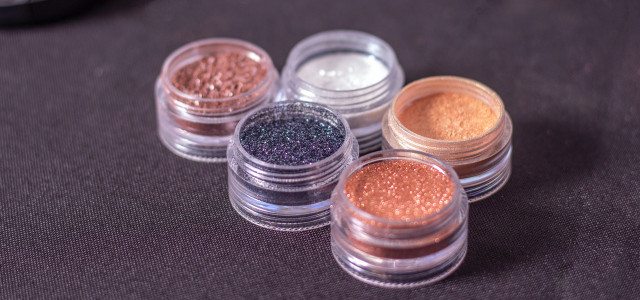Synthetic fluorphlogopite might seem like a more eco-friendly alternative to natural mica, but is it all it’s cracked up to be? We explore its benefits and dark side.
We can’t understand what synthetic fluorphlogopite is without first understanding what mica is. Mica is a mineral found in nature in many different forms, such as in sheets, flakes and crystals. Several minerals, including silicon, oxygen, aluminum and potassium, make up its makeup.
Due to its unusual structure, mica may be readily sliced into uniformly thin, flat sheets. These coatings are malleable, see-through, and resistant to heat, moisture, chemicals and various solvents. Before we dive deeper, it’s important to note that synthetic fluorphlogopite and man-made mica are essentially the same. Synthetic mica is manufactured in a lab using natural minerals, in contrast to genuine mica, which is acquired by mining and is valued for its reflective properties.
The resultant mineral basis, synthetic fluorphlogopite, is a close imitation of natural mica in its sparkling appearance.
How Is Synthetic Fluorphlogopite Made?

(Foto: CC0 / Pixabay / TomazJ)
Synthetic mica is made by mixing special minerals and heating them to extremely high temperatures. The minerals in question are potassium and aluminum silicates, which also contain silicon and oxygen as their main components. These silicates are incredibly common and can be found in rocks, soil and sand.
When these elements are combined and heated to high temperatures, they form tiny crystals that resemble shiny rocks. Voila, you have synthetic mica — or flurophlogopite!
Synthetic fluorphlogopite can be manufactured in a variety of colors and shapes. It has a structure similar to real mica, with thin, flat layers that can be readily separated. Its superb electrical and thermal insulator and resistance to heat, chemicals and moisture means it has versatile and worldwide applications.
What Products Can Synthetic Fluorphlogopite Be Found In?



(Foto: CC0 / Pixabay / lubovlisitsa)
As synthetic mica has such unique characteristics, it finds applications in a wide range of manufactured goods. Products like the following commonly include synthetic fluorphlogopite in their manufacturing processes:
- Cosmetics: Natural mica can be expensive, and synthetic mica is a common replacement in products like eyeshadows, blushes, glitter and highlighters. It increases the sparkle or shine of the finished cosmetic.
- Electronics: Synthetic mica has excellent heat resistance and electrical insulation qualities, making it useful in electronics as an insulator.
- Industrial coatings: To increase their longevity, and water and chemical resistance, synthetic mica can be added to paints, coatings and other industrial products.
- Plastics: Synthetic mica may be used to fortify plastics, making them last longer and withstand more wear and tear.
- Auto motor parts: Synthetic mica’s heat resistance and durability make it a good candidate for use in automobile components like brake pads and gaskets.
Can This Mica Alternative Help the Environment?



(Foto: CC0 / Pixabay / billycm)
The environmental implications of harvesting natural mica are substantial, but synthetic fluorphlogopite eliminates this problem. Deforestation, soil erosion and water pollution are all linked to the extraction of real mica. Using synthetic methods in mica manufacturing eliminates the need to worry about these everyday environmental tragedies.
Moreover, greener production practices that minimize waste, energy use, and carbon dioxide emissions may be used to create synthetic mica. As a result, the environmental impact of items using synthetic mica can be diminished.
Let’s consider the human cost of running a mica business. There are active mica mining industries in several countries, including India, China and Brazil. Furthermore, mica mining frequently involves the exploitation of child labor. Some youngsters in those countries have tragically lost their lives due to this. Therefore, synthetic mica acts as a cruelty-free alternative to natural mica.
However, every coin has two sides, and synthetic mica comes with its fair share of environmental challenges.
Synthetic Fluorphlogopite: Environmental Drawbacks



(Foto: CC0 / Pixabay / Caniceus)
Yes, even the creation of synthetic fluorphlogopite can have devastating effects on the surrounding ecology. Chemicals and energy used in production can have an adverse effect on air and water quality if not controlled. Synthetic mica goods also have the potential to add to pollution and trash when they reach the end of their useful lives.
Adding insult to injury, synthetic mica is often manufactured in China and Japan, meaning it travels halfway around the world to get to your local supermarket. Hence, it will only increase the carbon footprint of the average consumer.
While synthetic mica can be an eco-friendly and morally sound alternative to real mica, it is still not a perfect replacement. It has environmental benefits and downsides like any other material, and its influence on the environment will vary according to how it is made, used and discarded.
To lessen the harm done to the environment by the production of synthetic mica, efforts must be made to encourage the use of sustainable and ethical methods in these industries.
Read more:
- 8 Cruelty-Free Makeup Brands to Try in 2023
- Is Snail Mucin for Skin Ethical & Sustainable?
- 10 Best Ingredient Checkers for Skincare and Household Products
Do you like this post?








